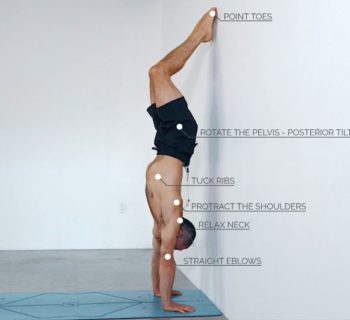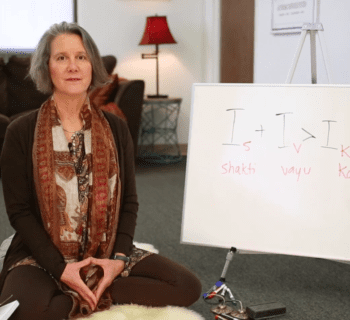Astavakrasana or Eight Angle Pose is an arm balance from the challenging Ashtanga Third Series. It is an asymmetrical arm balance. That means you do the arm balance with your legs over to the right and then with your legs over to the left. Ironically, it’s used to create symmetry in the body. You’ll find that it’s easier for you to do on one side than the other. By working on the pose on both sides over many years of practice, slowly each side will equal out.
If you do only symmetrical arm balances, you can subconsciously favor one side over the other. Asymmetrical balances show you which side is stronger than the other, so you work on each side equally. Over many years of practice, you will find more balance as you work on both sides.
While doing the pose itself is relatively accessible, all of the traditional entry points are pretty challenging. You need flexibility and strength to do this pose.
Let’s start by doing the pose on the right side.
Start out sitting on the ground with your knees bent and feet flat on the ground a little wider than hip’s width apart.
Put your hands on the ground. Your right arm is between your legs and in front of your hips. Your left arm is outside your left leg.
Place the right calf on the right shoulder.
One of the easiest ways to enter the pose is the leave the left foot on the ground as you press into your arms and send your hips up and back.
Now hook your left foot around your right foot and straighten your legs.
Then slowly reach your chest down and bend the elbows. Lift the legs up. Shoulders forward. Your hips are up and your belly is in.
To make it a bit harder. Hook your feet together before you lift up. Then straighten your legs.
Watch Kino’s Encyclopedia of Yoga class about the pose to find out how to work your way up to getting into Astavakrasana.
To see traditional entries and exits of the pose watch Kino’s video below.
By Omstars










